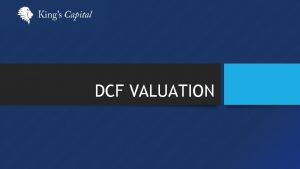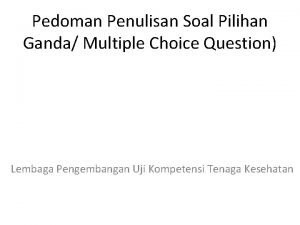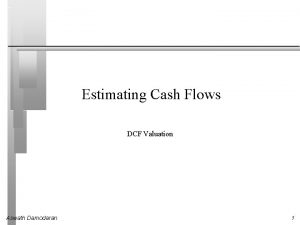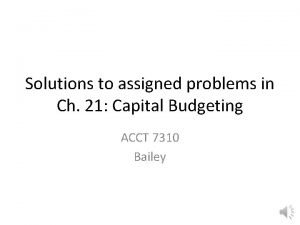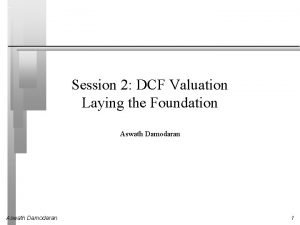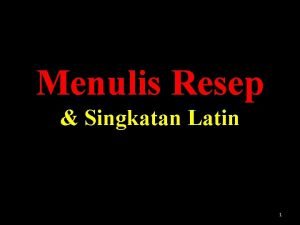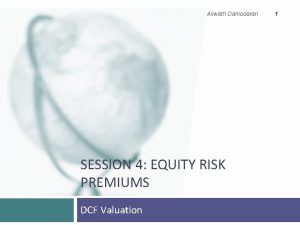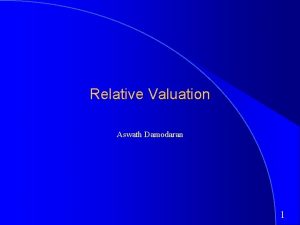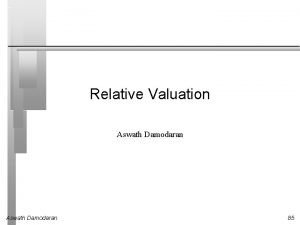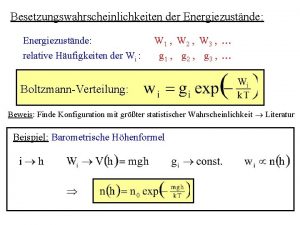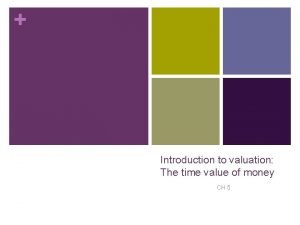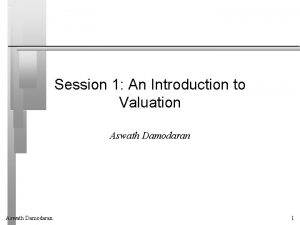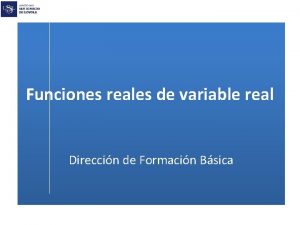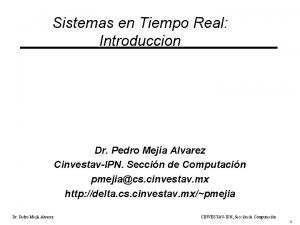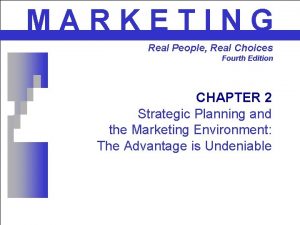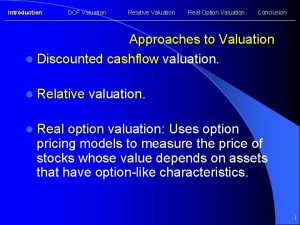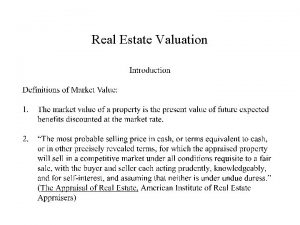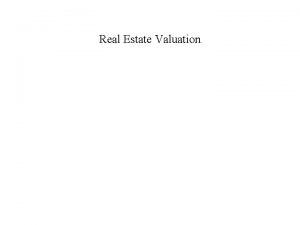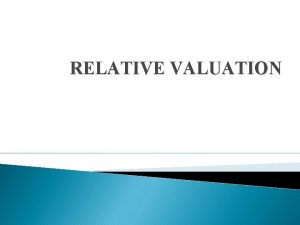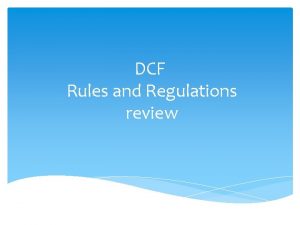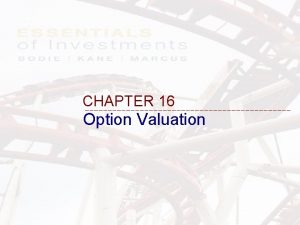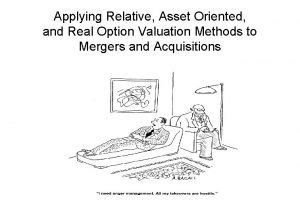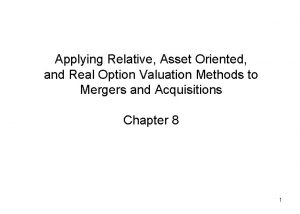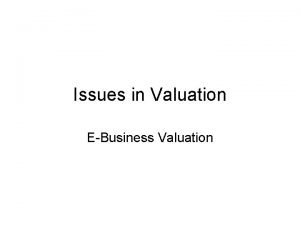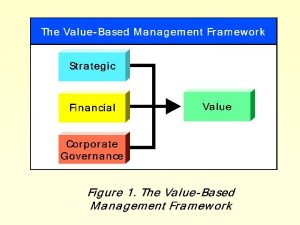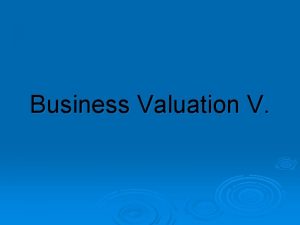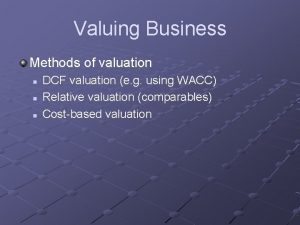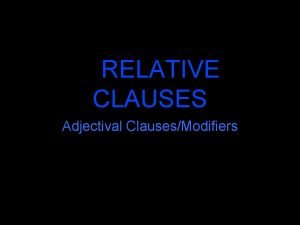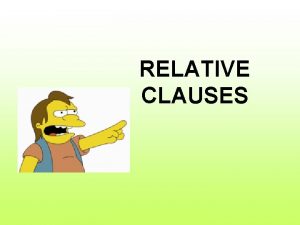Introduction DCF Valuation Relative Valuation Real Option Valuation





































- Slides: 37

Introduction DCF Valuation Relative Valuation Real Option Valuation Conclusion Valuation of High-Tech Companies Sanjai Bhagat Provost Professor of Finance University of Colorado – Boulder http: //leeds-faculty. colorado. edu/bhagat/ 1

Introduction DCF Valuation Relative Valuation Real Option Valuation Conclusion Approaches to Valuation l Discounted cashflow valuation. l Relative valuation. l Real option valuation: Uses option pricing models to measure the price of stocks whose value depends on assets that have option-like characteristics. 2

Introduction DCF Valuation Relative Valuation Real Option Valuation Conclusion 3

Introduction DCF Valuation Relative Valuation Real Option Valuation Conclusion Advantages of DCF Valuation l Since DCF valuation is based upon an asset’s fundamentals, it should be less exposed to market moods and perceptions. l If good investors buy businesses, rather than stocks (the Warren Buffett adage), discounted cash flow valuation is the right way to think about what you are getting when you buy an asset. 4

Introduction DCF Valuation Relative Valuation Real Option Valuation Conclusion Disadvantages of DCF Valuation l Since it is an attempt to estimate intrinsic value, it requires far more inputs and information than other valuation approaches l These inputs and information are not only noisy (and difficult to estimate), but can be manipulated by the savvy analyst to provide the conclusion he or she wants. 5

Introduction DCF Valuation Relative Valuation Real Option Valuation Conclusion When DCF Valuation works best This approach is easiest to use for assets (firms) whose – cashflows are currently positive, and – can be estimated with some reliability for future periods, and l It works best for investors who either – have a long time horizon, allowing the market time to correct its valuation mistakes and for price to revert to “true” value or, l 6

Introduction DCF Valuation Relative Valuation Real Option Valuation Conclusion Market Valuation of Digital Lightwave Share Price : $4. 87 Market Value : $153 million 7

Introduction DCF Valuation Relative Valuation Real Option Valuation Conclusion Present Value of DLWave’s Cashflows Current Market Capitalization of DLWave : l Earnings of DLWave: l Cashflow of DLWave: l l l Assumptions l Annual growth during the next 5 years l Cost of capital l Low growth rate after next 5 years l Number of years of low growth Present Value of DL Wave’s Cashflows $ 153 million. $ 2. 8 million. $6. 2 million. 25% 18% 10% 5 : $66 million 8

Introduction DCF Valuation Relative Valuation Real Option Valuation Conclusion Relative Valuation of Digital Lightwave 9

Introduction DCF Valuation Relative Valuation Real Option Valuation Conclusion Advantages of Relative Valuation l Relative valuation is much more likely to reflect market perceptions and moods than discounted cash flow valuation. l Relative valuation generally requires less information than discounted cash flow valuation. 10

Introduction DCF Valuation Relative Valuation Real Option Valuation Conclusion Disadvantages of Relative Valuation Relative valuation may require less information in the way in which most analysts and portfolio managers use it. However, this is because implicit assumptions are made about other variables (that would have been required in a discounted cash flow valuation). To the extent that these implicit assumptions are wrong the relative valuation will also be wrong. 11

Introduction DCF Valuation l Value Relative Valuation Real Option Valuation Conclusion of Firm = FCFF 1: expected free cash flow to the firm l k: firm’s cost of capital l g: growth in the expected free cash flow to the firm l l l Dividing both sides by FCFF 1 yields the Value/FCFF multiple for a stable growth firm: 12

Introduction l DCF Valuation Relative Valuation Real Option Valuation Conclusion The Value/FCFF multiple for a stable growth firm: l l Hence, picking a certain number for the Value/FCFF ratio implies certain assumptions about k and g. Similarly, for l Price/Earnings, l Price/Sales, l Price/EBITDA, etc. l 13


Price/Cash Flow Ratio for different k (in bold) and g (in italics)

Introduction DCF Valuation Relative Valuation Real Option Valuation Conclusion When relative valuation works best This approach is easiest to use when – there a large number of assets comparable to the one being valued – these assets are priced in a market – there exists some common variable that can be used to standardize the price. 16

Introduction DCF Valuation Relative Valuation Real Option Valuation Conclusion Relative Valuation of Digital Lightwave Acterna Agilent Tektronix Industry Price/Sales Ratio 0. 19 1. 99 2. 05 1. 56 Digital Lightwave ($ millions) 15. 7 164. 8 170. 0 129. 2 17

Introduction DCF Valuation Relative Valuation Real Option Valuation Conclusion What is a Real Option? Traditional discounted cashflow approaches cannot properly capture the company’s flexibility to adapt and revise later - decisions in response to unexpected market developments. Traditional approaches assume an expected scenario of cashflows and presumes management’s passive commitment to a certain static operating strategy. 18

Introduction DCF Valuation Relative Valuation Real Option Valuation Conclusion What is a Real Option? The real world is characterized by change, uncertainty and competitive interactions => – As new information arrives and uncertainty about market conditions is resolved, the company may have valuable flexibility to alter its initial operating strategy in order to capitalize on favorable future opportunities or to react so as to mitigate losses. This is the primary advantage of the real option valuation method. – This flexibility is like financial options, and is known as Real Options. 19

Introduction DCF Valuation Financial Options: Relative Valuation Real Option Valuation Conclusion Source of value in an option A call option gives the owner the right, with no obligation, to acquire the underlying asset by paying a pre-specified amount (the exercise price, X) on or before the maturity date. Value of a Call Option on the Maturity Date X Stock Price on the Maturity Date The asymmetry from having the right but not the obligation to exercise the option. Source of value in an option: 20

Introduction DCF Valuation Relative Valuation Real Option Valuation Conclusion Examples of Real Options l Option to invest in a new technology-based service/product, as the result of a successful R&D effort. l Equity in a firm with negative earnings and high leverage. l The patent and other intellectual property owned by a firm. 21

Introduction DCF Valuation Relative Valuation Real Option Valuation Conclusion Real Option and Classical Valuation of DLWave Current Market Capitalization of DLWave : l Earnings of DLWave: l $ 153 million. $ 2. 8 million. l Current Market Value = Present Value of Cashflows from Assets in Place + Present Value of Cashflows from Future Growth Opportunities l Discounted Cashflow Technique: More appropriate for valuing cashflows from Assets in Place. l Real Option Valuation: More appropriate for valuing cashflows from Future Growth Opportunities. 22

Introduction DCF Valuation Relative Valuation Real Option Valuation Conclusion Present Value of Cashflows from Assets in Place l Cashflow of DLWave: l Assumptions l Annual growth during the next 5 years l Cost of capital l Low growth rate after next 5 years l Number of years of low growth l $6. 2 million 25% 18% 10% 5 Present Value of Cashflows from Assets in Place: $66 million 23

Introduction DCF Valuation Relative Valuation Real Option Valuation Conclusion Real Option Value Component of DLWave We use a modification of the Black-Scholes option pricing model to value the real options associated with DLWave: Value of real option = V e-yt N(d 1) - X e -rt N(d 2). where, d 1 = [ ln (V/X) + (r - y + (s 2)/2) t ] / s(t) ½. d 2 = d 1 - s (t) ½. where, N (. ) = Cumulative normal density function. continued. . . 24

Introduction DCF Valuation Relative Valuation Real Option Valuation Conclusion Real Option Value Component of DLWave Value of real option = V e-yt N(d 1) - X e -rt N(d 2). where, d 1 = [ ln (V/X) + (r - y + (s 2)/2) t ] / s(t) ½. d 2 = d 1 - s (t) ½. where, V = Present value of expected cash inflows from investing in DLWave’s future opportunities (under base case assumptions) = $235 million. X = Present value of the costs of investing in DLwave’s future opportunities (under base case assumptions) = $226 million. Hence, classical discounted cashflow valuation technique would suggest a value of $9 million from investing in DLWave’s future opportunities. 25

Introduction DCF Valuation Relative Valuation Real Option Valuation Conclusion Real Option Value Component of DLWave Current Market Capitalization of DLWave : $ 153 million. Present Value of Cashflows from Assets in Place: $66 million Classical discounted cashflow valuation technique would suggest a value of $9 million from investing in DLWave’s future opportunities. 26

Introduction DCF Valuation Relative Valuation Real Option Valuation Conclusion Real Option Value Component of DLWave Value of real option = V e-yt N(d 1) - X e -rt N(d 2). where, d 1 = [ ln (V/X) + (r - y + (s 2)/2) t ] / s(t) ½. d 2 = d 1 - s (t) ½. where, s 2 = Variance in the expected cash inflows over time, allowing for technological, legal, and market changes = 40%. t = Number of years during which the real option can be exercised = 4 years. y = “Dividend yield” of the project before the option is exercised. r = Riskfree interest rate for t years = 1. 5%. Disadvantage of the real option valuation method: needs estimation of V, X, Estimation of V, X, s 2 , t requires additional assumptions. s 2 , t, y, and r. 27

Introduction DCF Valuation Relative Valuation Real Option Valuation Conclusion Real Option Value Component of DLWave Base Case Assumptions Population = Potential Market = Likely penetration of potential market = Annual revenues per customer = Cost of capital = Number of years of competitive advantage = Variable operating costs = 270 million 15% of population 30% $12 18% 5 70% of revenue Real Option Value = $86 million 28

Introduction DCF Valuation Relative Valuation Real Option Valuation Conclusion Real Option Value Component of DLWave l Current Market Value = Present Value of Cashflows from Assets in Place + Present Value of Cashflows from Future Growth Opportunities l Current Market Value = $66 million + $86 million = $152 million 29

Introduction DCF Valuation Relative Valuation Real Option Valuation Conclusion Sensitivity Analysis of Real Option Value Component of DLWave 30

Introduction DCF Valuation Relative Valuation Real Option Valuation Conclusion The Bottom Line l Traditional valuation procedures cannot properly capture the company’s flexibility to adapt and revise later decisions in response to unexpected competitive/technological/market developments. l The real option technique can value the company’s flexibility to alter its initial operating strategy in order to capitalize on favorable future growth opportunities or to react so as to mitigate losses. l Valuations computed using the real option technique are often closer to market valuations for high-growth stocks. 31

Valuation of IPOs S. Bhagat, R. Aggarwal, S. Rangan The Oxford Handbook of Venture Capital Oxford University Press 32

l “Early profitability is not the key to value in a company like this (Inktomi). ” – Jerry Kennelly, Chief Financial Officer of Inktomi Inc l “But valuations are just as often based on gut feel. As one entrepreneur told me, “Its as if everybody just settles on a number that they are comfortable with. ” – Gove in Red Herring. 33

34

Value of IPO w. r. t. Net Income 35

Impact of Ownership Structure on IPO Valuation Post-IPO ownership levels of l CEO l Officers & Directors l Venture Capitalists l Other 5% Blockholders Changes in percentage ownership of above four categories of owners at the time of IPO. Greater the post-IPO ownership, and smaller the sales by each of these four categories of owners greater the IPO valuation. 36

37
 Relative valuation vs dcf
Relative valuation vs dcf Soal pilihan ganda (multiple choice)
Soal pilihan ganda (multiple choice) What is options
What is options Fx option pricing
Fx option pricing Dcf project management
Dcf project management Mandated reporter massachusetts
Mandated reporter massachusetts Fcfe damodaran
Fcfe damodaran Dcf sensitivity analysis
Dcf sensitivity analysis Dcf aswath
Dcf aswath S2 dd tab 1
S2 dd tab 1 Ct dcf careline
Ct dcf careline Fsfn production login
Fsfn production login Damodaran country risk premium 2016
Damodaran country risk premium 2016 Fixed income valuation methods
Fixed income valuation methods Relative valuation damodaran
Relative valuation damodaran Damodaran relative valuation
Damodaran relative valuation Relative valuation
Relative valuation T-shirt sizing agile example
T-shirt sizing agile example Stage 15 relative clauses and relative pronouns
Stage 15 relative clauses and relative pronouns 2 way relative frequency table
2 way relative frequency table The person who phoned me last night is my teacher.
The person who phoned me last night is my teacher. Relative adverb examples
Relative adverb examples Al aqqad real estate valuation
Al aqqad real estate valuation Introduction to valuation the time value of money
Introduction to valuation the time value of money Introduction to valuation
Introduction to valuation Introduction to property valuation
Introduction to property valuation Funciones reales de variable real
Funciones reales de variable real The real real fashion copywriter
The real real fashion copywriter Sensor and (tiempo real or real time)
Sensor and (tiempo real or real time) Real life example of polynomial
Real life example of polynomial Ch 9 ream people real choice case study
Ch 9 ream people real choice case study The real thing short story
The real thing short story Marketing real people real choices
Marketing real people real choices Southpointe village apartments fishers in
Southpointe village apartments fishers in Marketing real people real choices 11th edition
Marketing real people real choices 11th edition Marketing real people real decisions
Marketing real people real decisions Marketing real people real decisions
Marketing real people real decisions Bond equivalent yield
Bond equivalent yield
